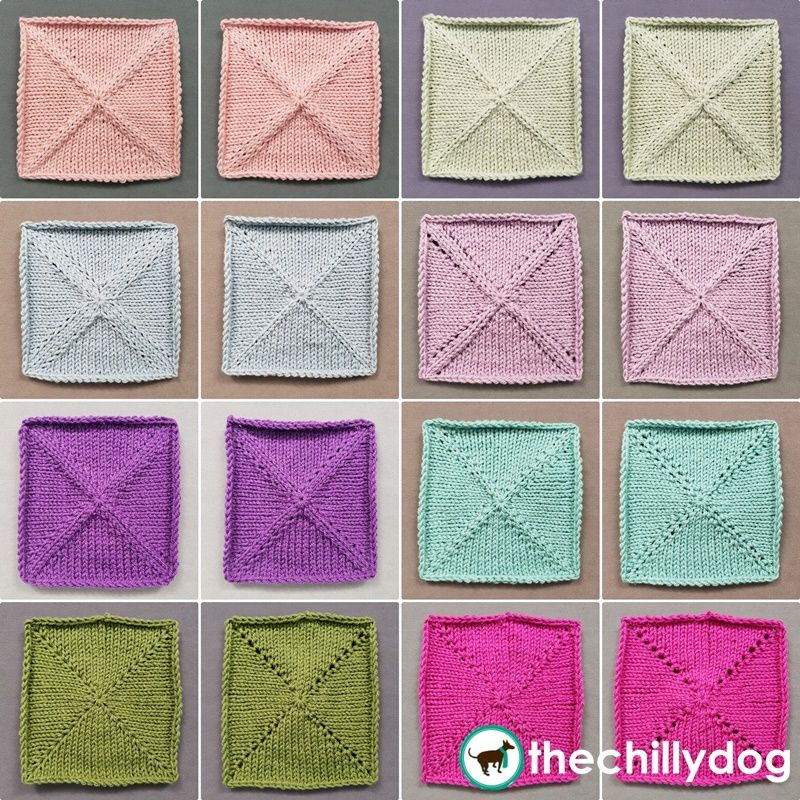Knit Inc Sampler Squares | 7 Lesson Series

When I first started knitting, I stressed every time I saw the abbreviation INC in a pattern because I had no idea how I should magically increase a stitch. (Confession... I also had no idea that there were so many different ways to add a stitch in my knitting.)
As I transitioned to life as a designer I began to swatch out everything so I can see what different stitches patterns, decreases, increases, cast ons, bind offs, etc. look like before I use them in a pattern. It is so helpful to compare the results of different knitting techniques side by side.
With that in mind, this post begins a series of lessons and simple block patterns to help you learn, practice and compare a variety increasing methods. Each lesson in the series will teach you one or two ways to increase a stitch and will include a pattern for a simple knit block or two.
You can make 1 block to try a new-to-you method, or knit lots of blocks and join them together into a larger piece like a scarf, blanket, poncho... You could knit all of your blocks the same color, or use lots of different colors. Have fun, be creative and enjoy learning.
There's more to explore in the Learning Library!
